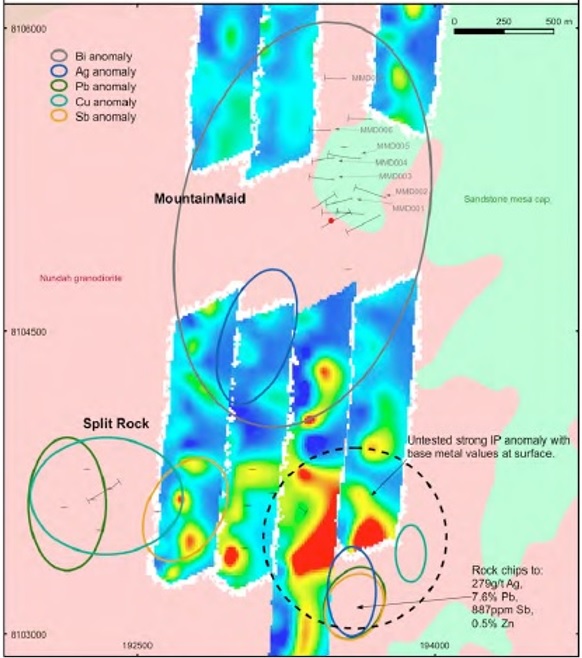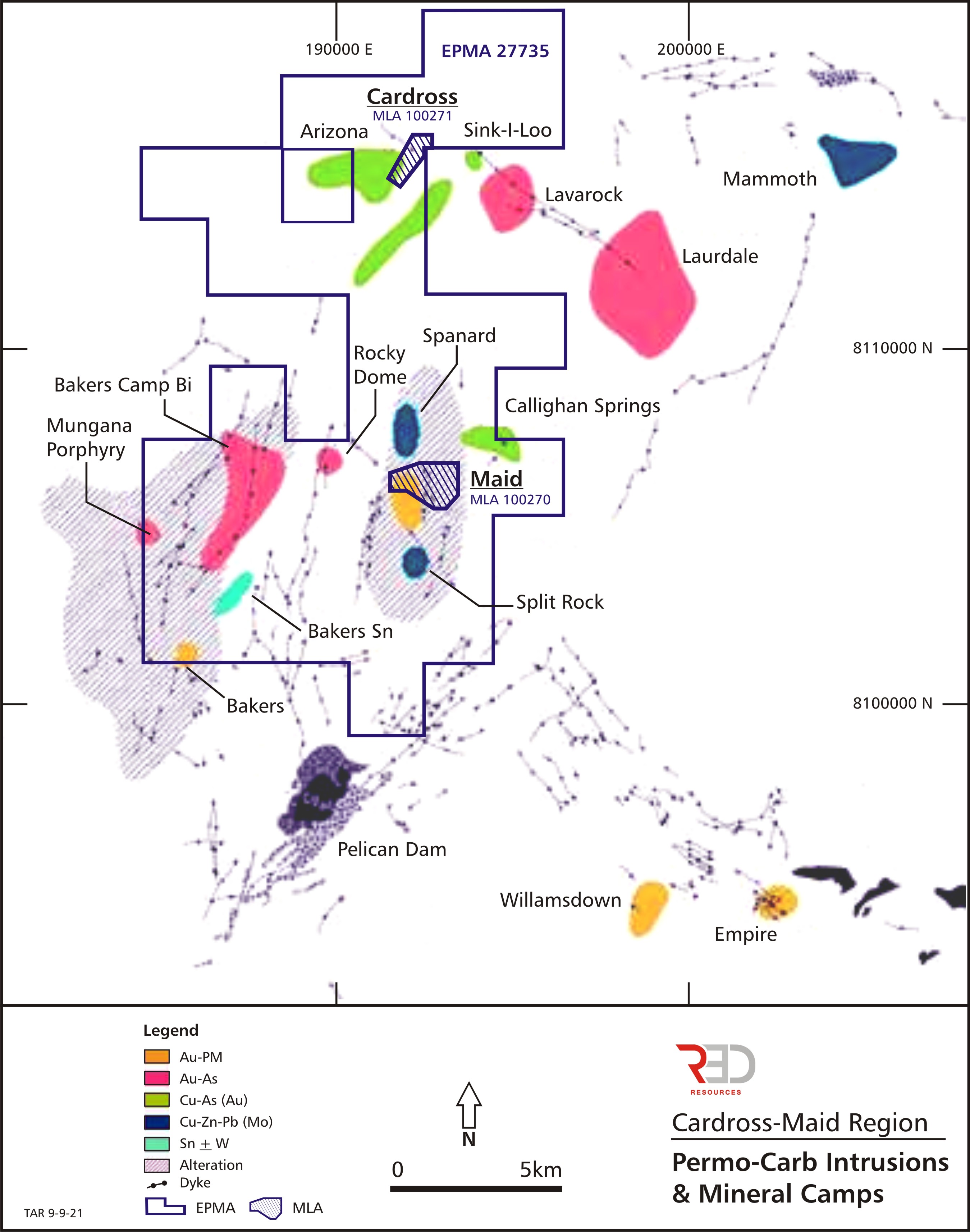Mountain Maid Gold Project
The Mountain Maid deposit south of Cardross is hosted by the Silurian Nundah Granodiorite, which intrudes gneissic metamorphic rocks and granite plutons of the Proterozoic Dargalong Metamorphic Group. The Nundah Granodiorite typically comprises a medium- to coarse-grained leucocratic biotite-muscovite granodiorite and an adamellite. In the Mountain Maid area, the Nundah Granodiorite has been intruded by Permo-Carboniferous dykes and small stocks varying from rhyolite, rhyodacite porphyry, monzogranite, granodiorite to monzonite porphyry. Morrison (2017) classifies the Cardross copper and Mountain Maid projects as intrusion-related mineral systems.
Modern exploration of the Mountain Maid area commenced in 1994 when Cyprus Gold Australia Corporation (Cyprus Gold) explored the area as part of a larger exploration project. In the Mountain Maid area, Cyprus Gold undertook initial programs of soil and rock chip sampling, followed by several campaigns of RC and diamond drilling.
In March 2009, Axiom completed a program of seven diamond holes, which was followed by a larger program of 53 RC holes in 2010.
Of the drilling programs completed to date at Mountain Maid, Axiom's RC drilling provides the largest proportion of the resource dataset, contributing 77% of the composites used for resource estimation. Quality of the sampling and assaying for this dataset was closely monitored by comprehensive QAQC, including recording of recovered sample weights, routine insertion of field duplicates, submission of coarse blanks and reference standards and inter-laboratory check assays.
Historical drilling is summarised below (Axiom 2009)
| |
|
Number of Holes |
Metres |
Average length(m) |
| Cyprus 1994-99 |
RC |
2 |
610 |
305.1 |
| |
Diamond |
6 |
1,476 |
245.9 |
| |
Subtotal |
8 |
2,086 |
260.7 |
| Axiom 2009-10 |
RC |
53 |
11,081 |
209.1 |
| |
Diamond |
7 |
1,729 |
247.0 |
| |
Subtotal |
60 |
12,810 |
213.5 |
| Total |
|
68 |
14,896 |
219.1 |
Mineralisation
Mountain Maid deposit has been classed as an intrusion-related, structurally controlled gold deposit (Morrison, 2017), with the mineralisation associated with phyllic alteration and silicification and hosted by several styles of quartz veins of varying orientations. Central portions of the mineralisation are unconformably overlain by unmineralised Jurassic sandstone (typically averaging around 9 m), which caps a prominent mesa around 30 m high. The mineralisation and host sequence has been weathered to depths ranging from approximately 5 m to 90 m, and averaging at 40 m.
The mineralised domain dips at approximately 70° towards the east and extends over a strike of approximately 680 m, with widths increasing from around 40 m in the north to 400 m in the south and averaging approximately 200 m. Mountain Maid mineralisation is not closed off by drilling at depth, and the interpreted mineralised domain extends to 0 mRL which approximates to 325 m below surface and is approximately 7 m below the deepest drillhole (See Below).
The Mountain Maid area hosts large mineralised systems with most drilling concentrated on the main gold resource.
Tartana's focus will be on:
- Defining a shallow oxide gold resource within the existing JORC 2004 resources and which may be suitable of low cost heap leaching, and
- Exploring the Mountain Maid - Split Rock corridor, particularly where earlier explorers such as Axiom Mining (Annual Report 2009) identified IP anomalies which were never followed up.



